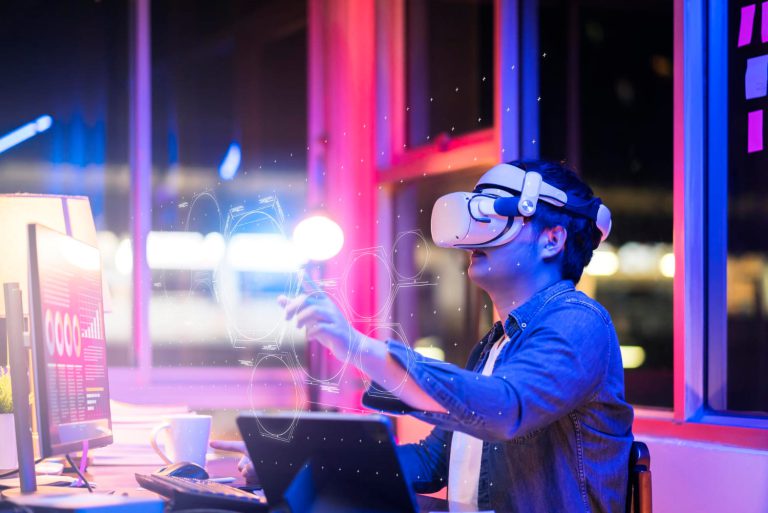Metaversity: A futuristic vision or an achievable reality?
6 de November de 2023
The metaverse is a term coined by Neal Stephenson in his novel “Snow Crash” in 1992, but in recent years it has gained prominence due to the growth of virtual platforms such as Second Life, Minecraft and, more recently, virtual environments based on virtual and augmented reality. The metaverse offers an online space where people can interact with each other and with digital objects and environments in a similar way to real life.
The metaverse and the university
Higher education has begun to explore the possibilities of the metaverse as a new environment for teaching and learning. Virtual universities in the metaverse can provide an immersive educational experience, allowing students to explore virtual environments, interact with objects, and collaborate with other students and faculty in real time. This can be especially beneficial for fields of study that require experimentation and three-dimensional visualization, such as architecture, medicine or biology.
Advantages of the metaverse in university education
The university metaverse offers advantages such as global access to education, immersive experiences with virtual and augmented reality, collaboration and social learning in virtual environments, personalization of learning, access to resources and experts, opportunities for innovation and experimentation, and reduced costs associated with physical infrastructure and transportation.
These advantages promote global education, facilitate hands-on learning, foster collaboration, enable customization to individual needs, provide access to extensive resources and expertise, stimulate innovation, and offer an economical alternative for students.
Challenges and Considerations
Despite the potential of the metaverse in university education, there are challenges and considerations to take into account. One is access to the technology required to participate in the metaverse, such as virtual reality devices or powerful computers. In addition, effective design of educational virtual environments requires careful planning and development, as well as adequate training for teachers and students. In addition, social interaction in the metaverse raises security and privacy issues that must be adequately addressed.
It is critical to monitor technological developments closely and adapt as new opportunities and challenges arise. The rapid evolution of technology requires that university institutions remain current and open to adopting new educational tools and approaches. This implies the need for constant training and updating for both faculty and students.
Ultimately, the future of the university and education will depend on how we harness and adapt these technologies for the benefit of students. Collaboration between academics, technology professionals and students will be critical to drive educational innovation and ensure that the solutions adopted are aligned with educational values and societal needs.
Conclusions
The metaverse presents great potential for university education by providing an immersive and collaborative learning experience. Although there are still challenges to overcome, such as technological accessibility and security, the adoption of virtual environments in higher education can improve the quality of teaching and broaden access to education. The university in the metaverse can open up new opportunities for exploration, experimentation and global connection in education, paving the way for more inclusive and adaptive education in the 21st century.

